An important game in the MLS Saturday fixtures as the Eastern Conference leaders Philadelphia Union faced with the Western Conference second-placed Seattle Sounders. The tough clash ended in a 0-0 draw but it was an interesting tactical battle. This tactical analysis will reveal some of the elements that led to the goalless draw.
Team news and lineups
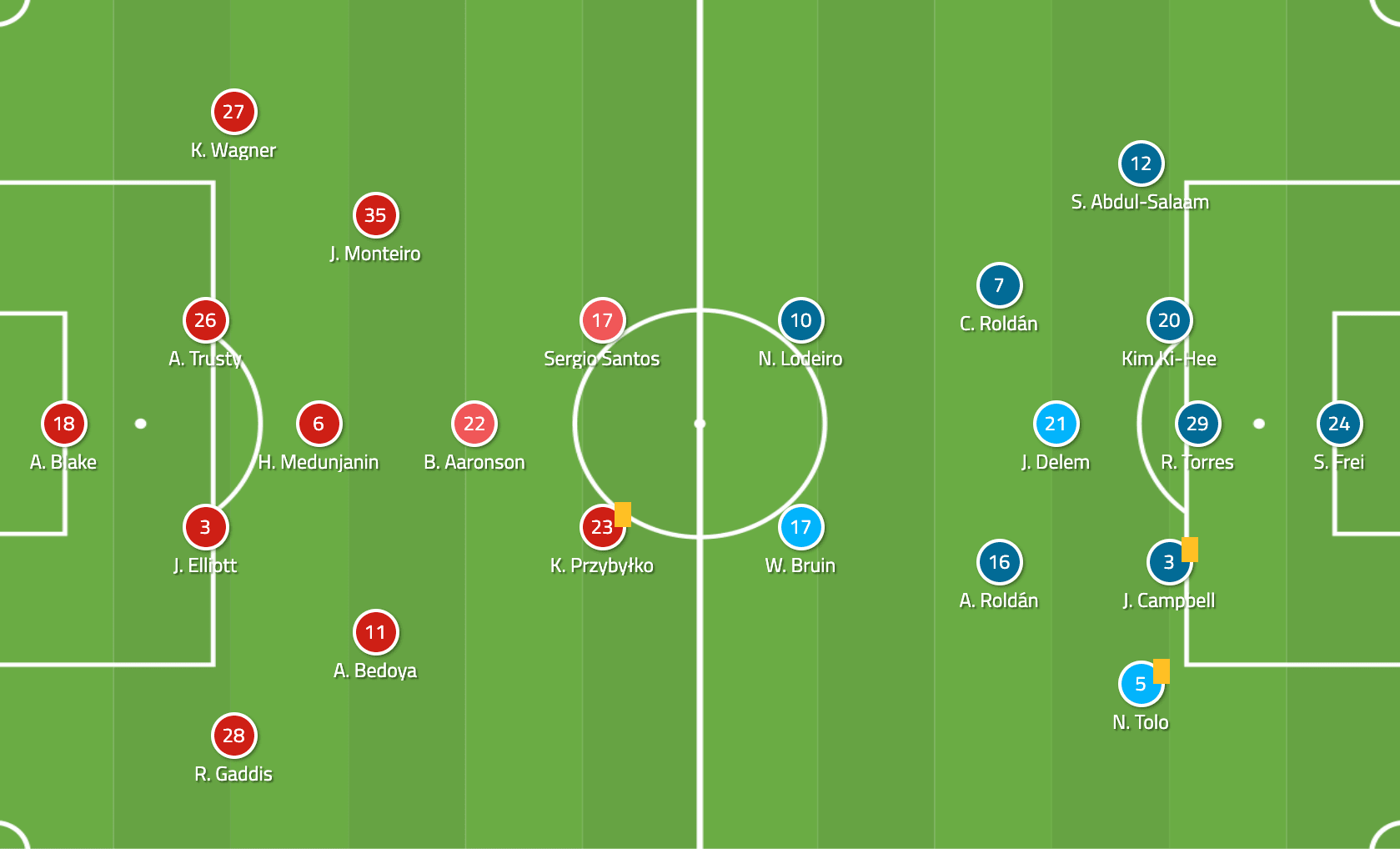
The last two times Philadelphia welcomed Seattle the guests left without points as Philadelphia won both games and, more importantly, Philadelphia are doing wonderfully in this season so far. Also, previously they won against Toronto FC thus they came to this battle with good signs.
Jim Curtin’s side lined up in the usual 4-3-1-2 structure, the only changes compared to the previous match were Aaronson got benched and Fabián played behind the strikers. In the first lane, Santos was employed instead of Picault.
Seattle Sounders are also doing great as the second in the West, they won the last two games but they had three consecutive draws previously, although one of them was against Los Angeles FC.
Thus a great battle was ahead, indeed. Seattle changed the formation and deployed a 5-3-2 system to negate the opponent’s attacking threat. This means they tried to prevent their progression while they could hold a stable backline which was capable of dealing with Philadelphia’s attackers.
For the 5-3-2 system, Torres was selected for the team in between Kee-hee and Campbell. Abdul-Salaam and Tolo moved to the wing-back position while the midfield duo of Roldan and Delem had Alex Roldan added to it. Furthermore, Lodeiro moved to the front line as a striker and Ruidíaz was replaced by Bruin.
Philadelphia Union dominate the game
Generally, both sides have a similar average possession rate, only a slight advantage for Philadelphia. This game was out of the ordinary, however, since the home side had the ball in overall 68% of the time, which shows a massive possession phase for them. Although this was partly because of the guests’ defensive manner and how they approached the game.
Nevertheless, Philadelphia pressed high once the opponent tried to build from the back. They often prevented the progression and won the ball back.
In goal kick situations, Kee-hee and Campbell took wide positions, usually on the two sides of the penalty box, while Torres pushed forward in the centre. The wing-backs stayed very wide and in a higher position. Against Seattle’s 2-1 staggering in the middle, the two Union strikers pressed. Przybyłko and Santos occupied on the two sides of Torres as a base point. Then the ball-near striker pressed the centre-back with a curved run whilst the far sided striker marked Torres.
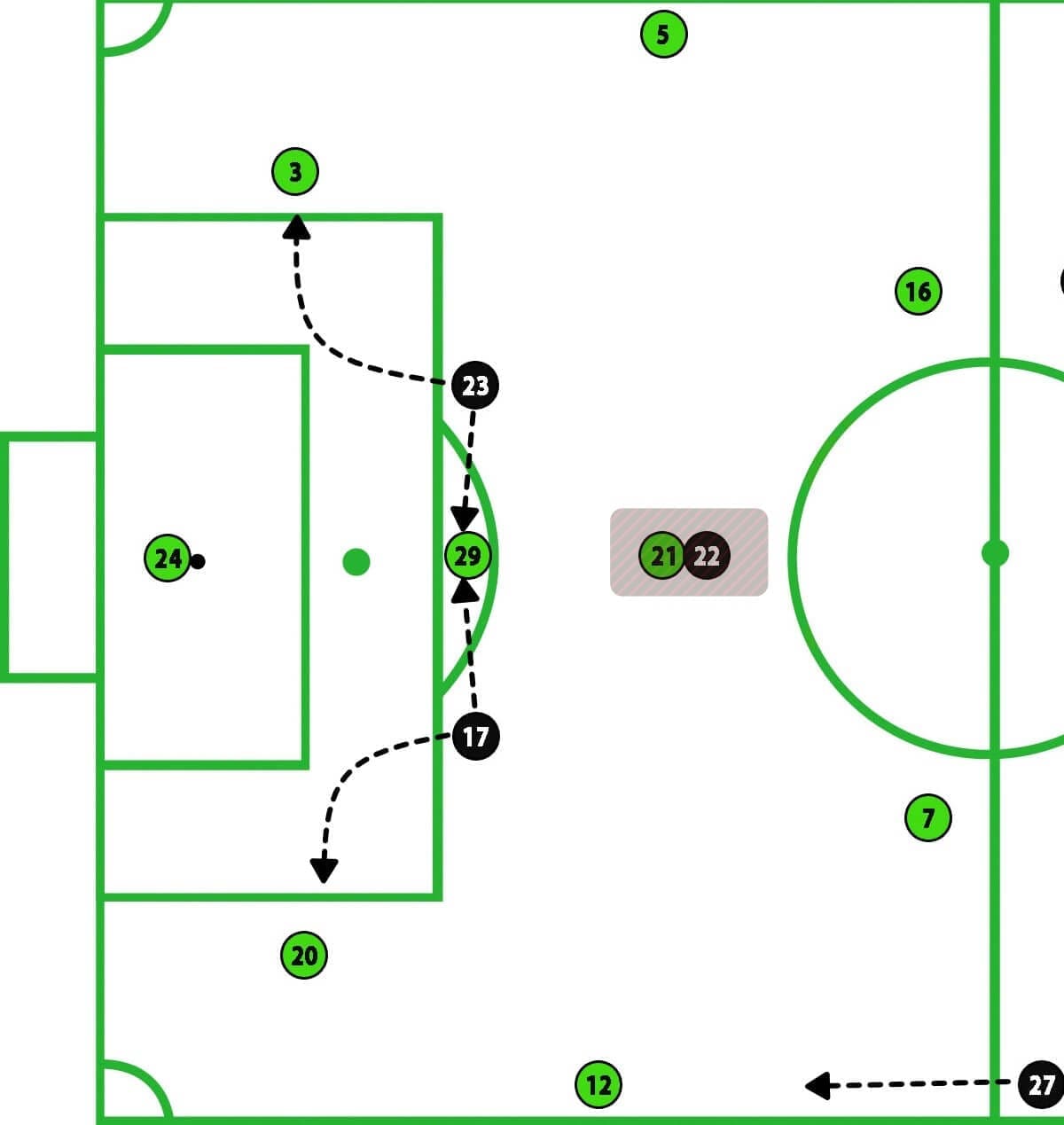
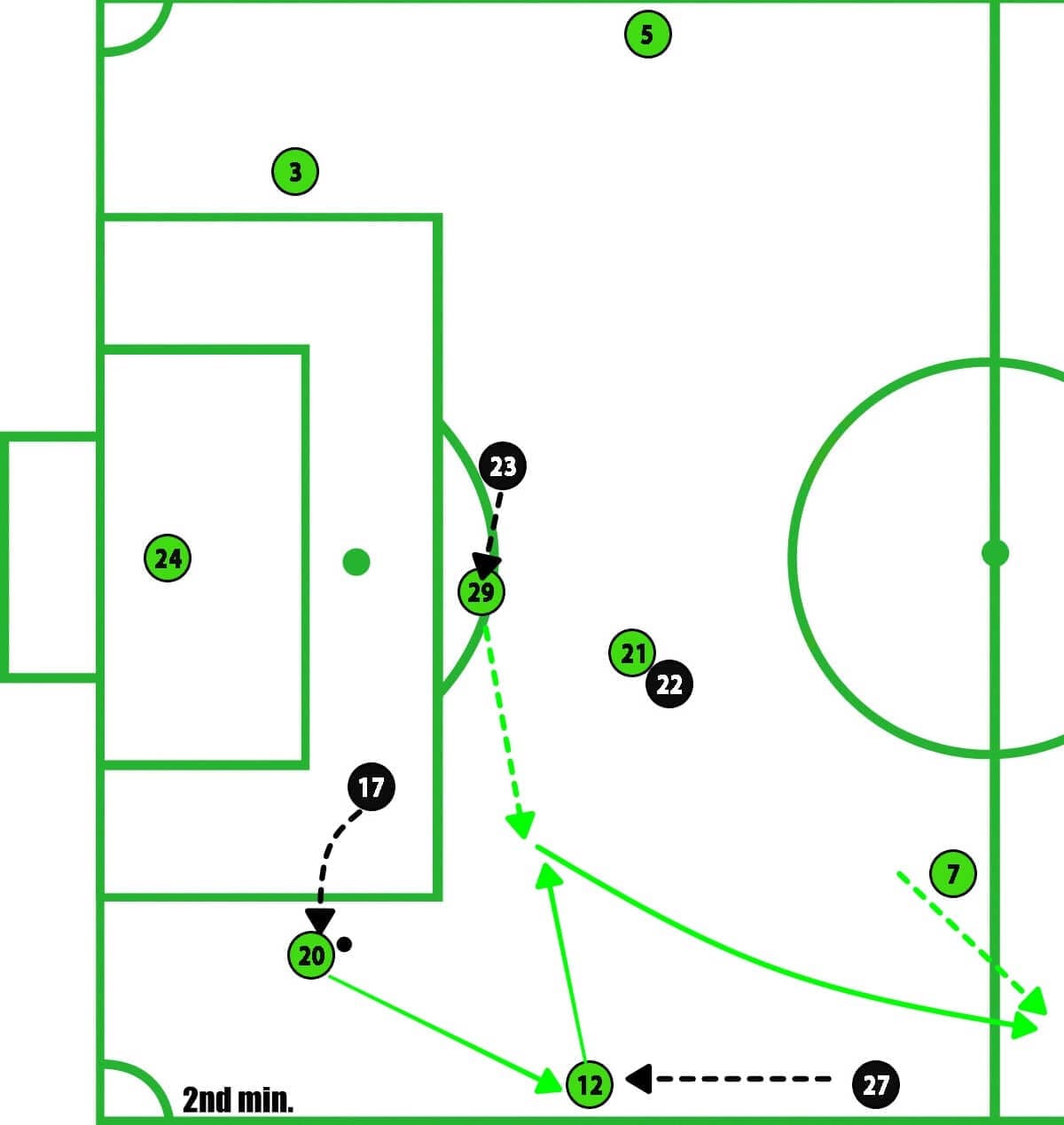
At the beginning of the match, Seattle were able to outplay Philadelphia’s pressing. As the image below shows, due to the big distance and late run of Wagner (full-back), Salaam had time to receive the ball and make the lateral pass to Torres who played the ball in behind the Philadelphia full-back where the nearby eight, Roldan, ran in.
However, a bit later, Philadelphia were able to prevent the progression and win the ball back. In the sixth minute, the same situation as earlier but this time the ball-near central midfielder pressed the wing-back. Thus Salaam had less time for on the ball action. He passed back to the centre-back who volleyed towards the striker but due to the tight mark, Union won the ball.
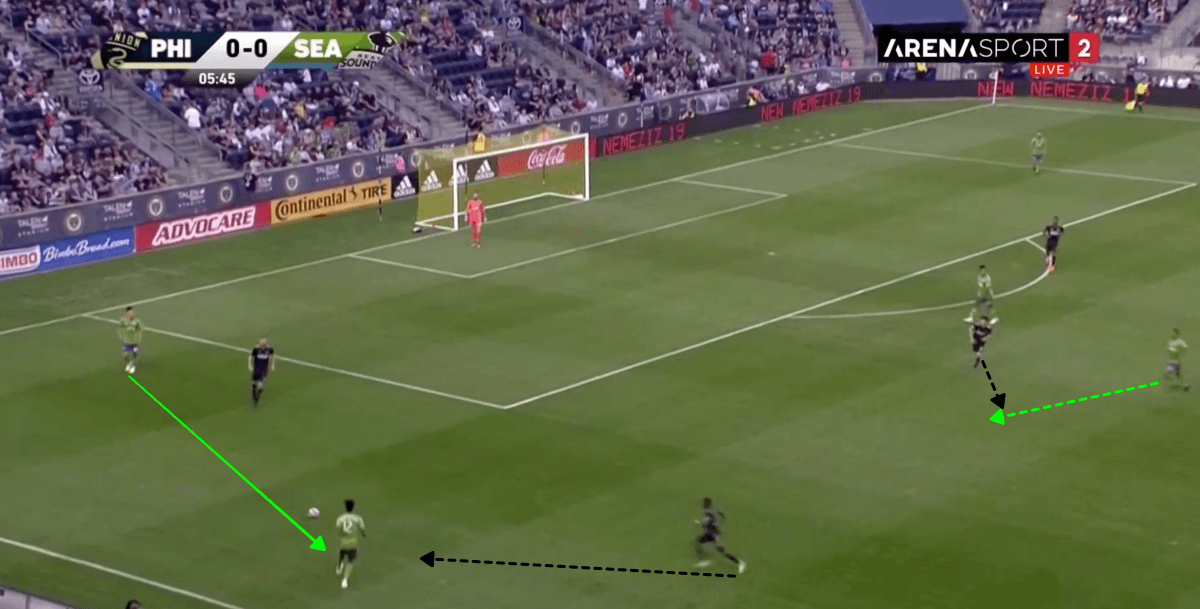
Seattle caused trouble for Philadelphia
In possession, Union build from the back. In order to allow the centre-backs to dribble up on the ball, Medunjanin often dropped in between them. The left eight, Monteiro, took the left half-space but he had to drop back to the centre to give presence to the central in behind Seattle’s first line of press. While on the right, Bedoya pushed forward and occupied high in the right half-space and the attackers were occupied narrow.
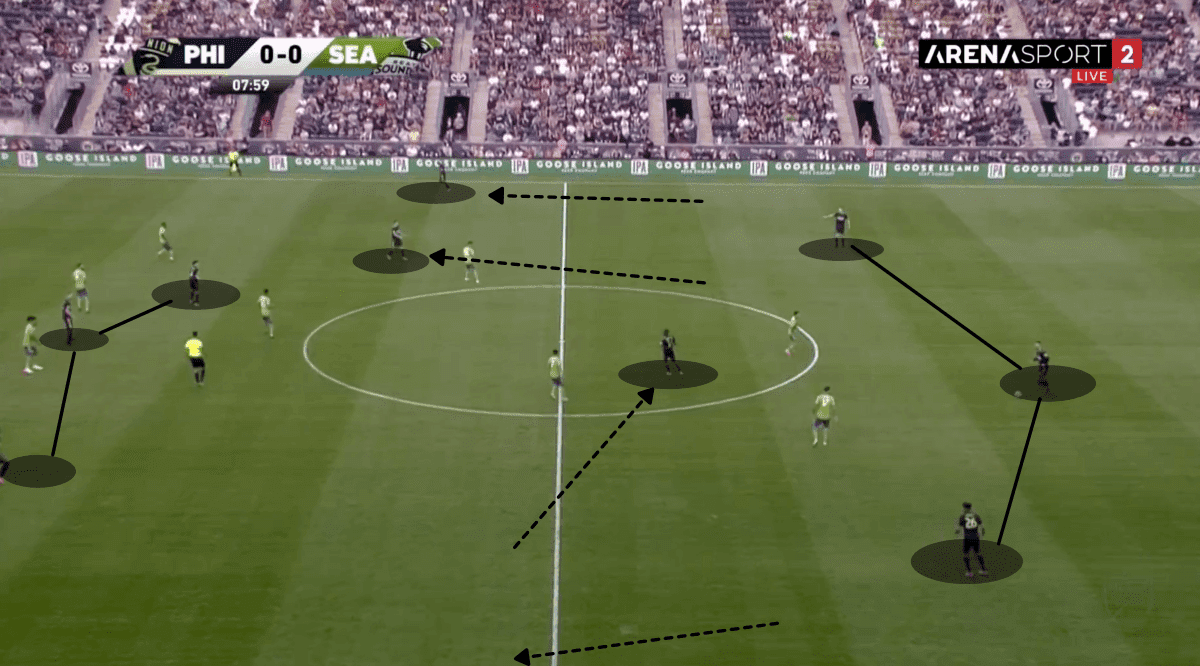
The full-backs were important since the narrow formation of 4-3-1-2 they were the only who added width to the team thus they also advanced really high up on the wings, as the image above shows.
Neutralising this narrow structure of Union, Seattle focused on the centre to block that area. In order to make the centre inaccessible, Seattle’s first line were narrow. The two strikers aimed to block the central passing lanes and force the opponent wide which allowed the centre-midfielders to occupy a wider position, therefore they could immediately press the advancing centre-back.
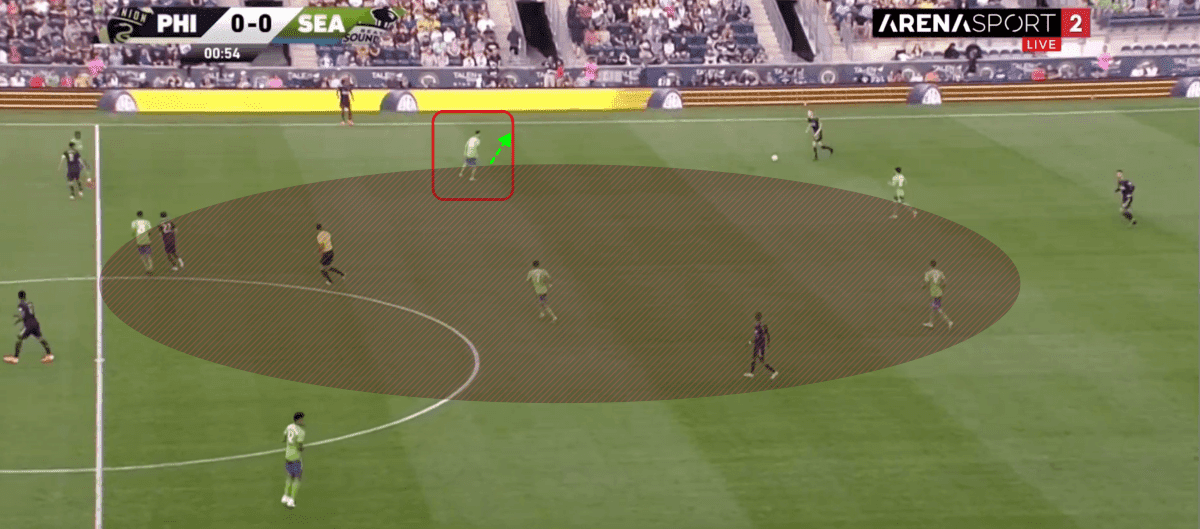
Here is another example where the guests blocked the passing lane towards the centre thus Union used the wing again. The issue here was that the full-back dropped to provide a passing option for Elliott. However, Roldan was able to prevent again because Philadelphia did not occupy important zones. Bedoya positioned narrow and although he created a 2v1 situation with one of the strikers against Delem, they could not take advantage of it. The better choice for Bedoya there was to drop deeper and wider to create a decision-making crisis for the nearby opponent.
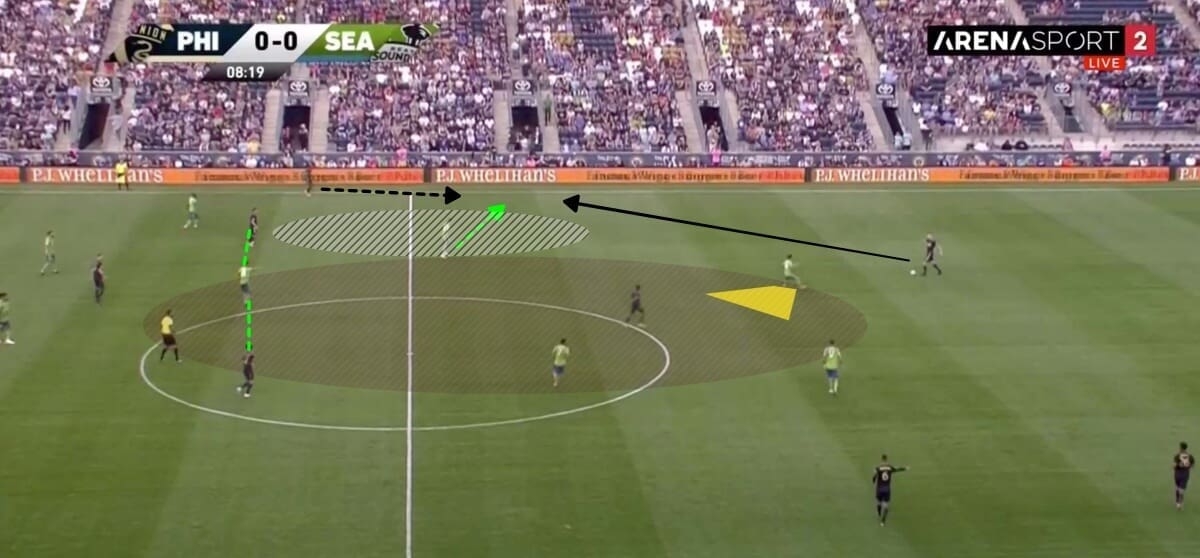
This kind of structural issue – lack of occupying important zones – was evident in their attack not just in the build-up.
Isolation in the opponent’s half
With the quick shifting of the Seattle midfield, they were able to quickly close down and stop the opponent’s attack. In this situation, Philadelphia tried to progress through Monteiro but Roldan quickly closed on him thus the only option was to pass to the full-back. Wagner was instantly pressed by the opposition wing-back.
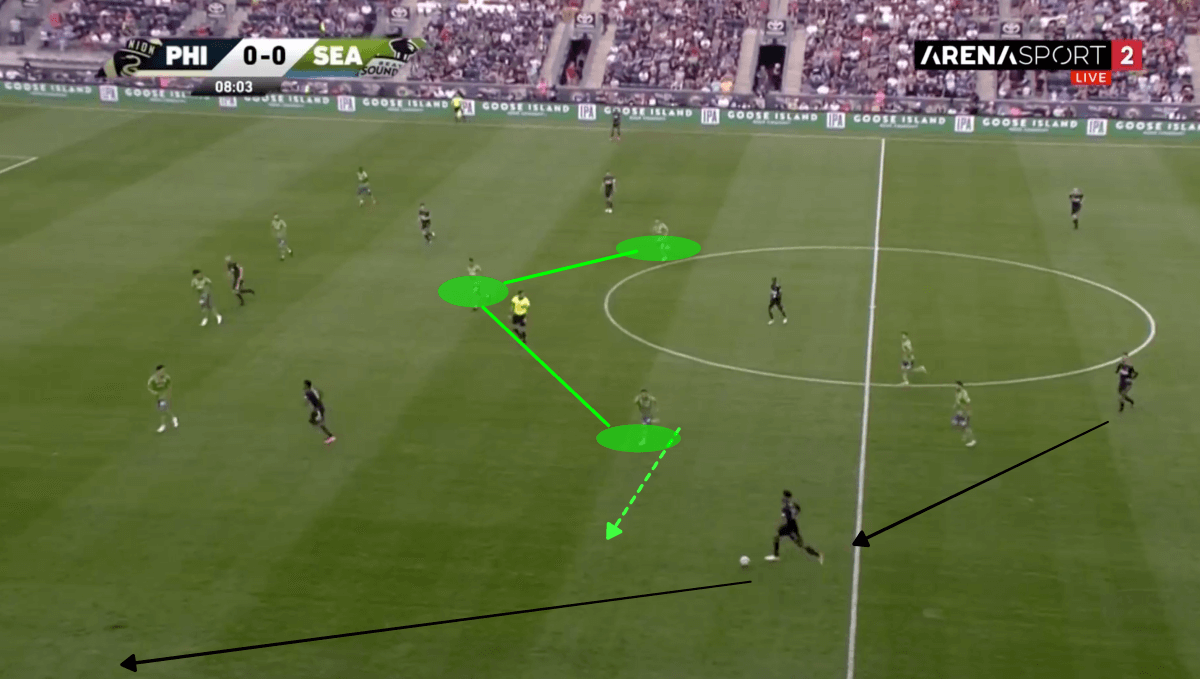
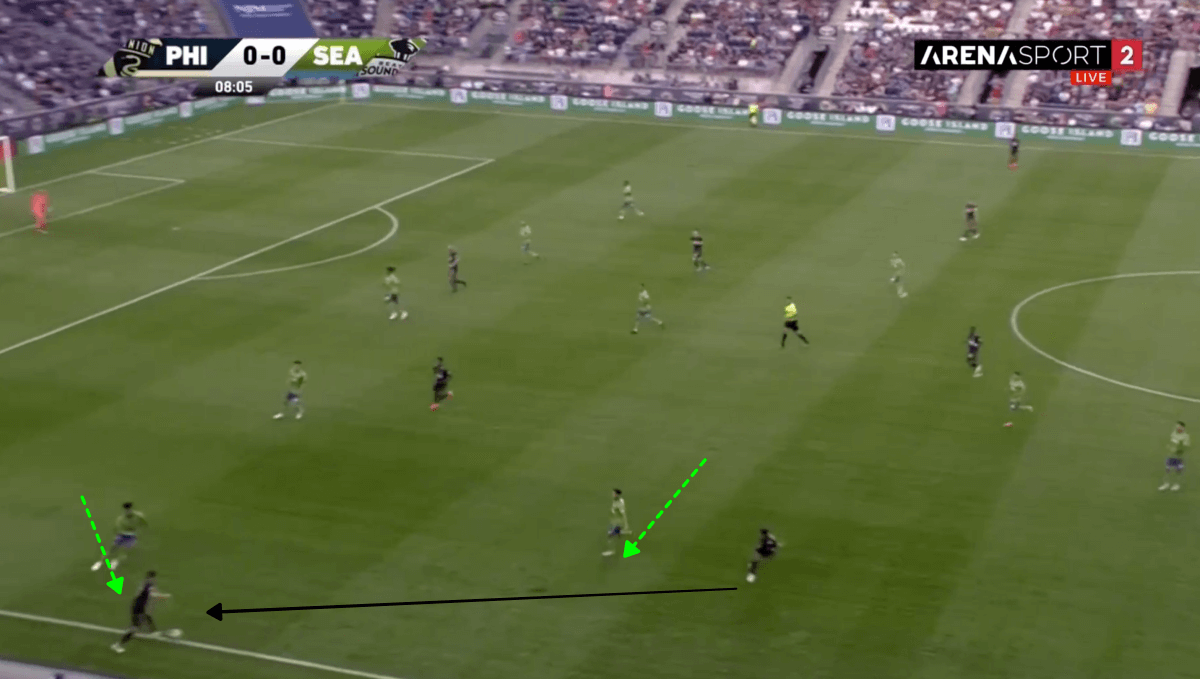
Philadelphia players often had to deal with the isolation, however, most of the time it was unsuccessful.
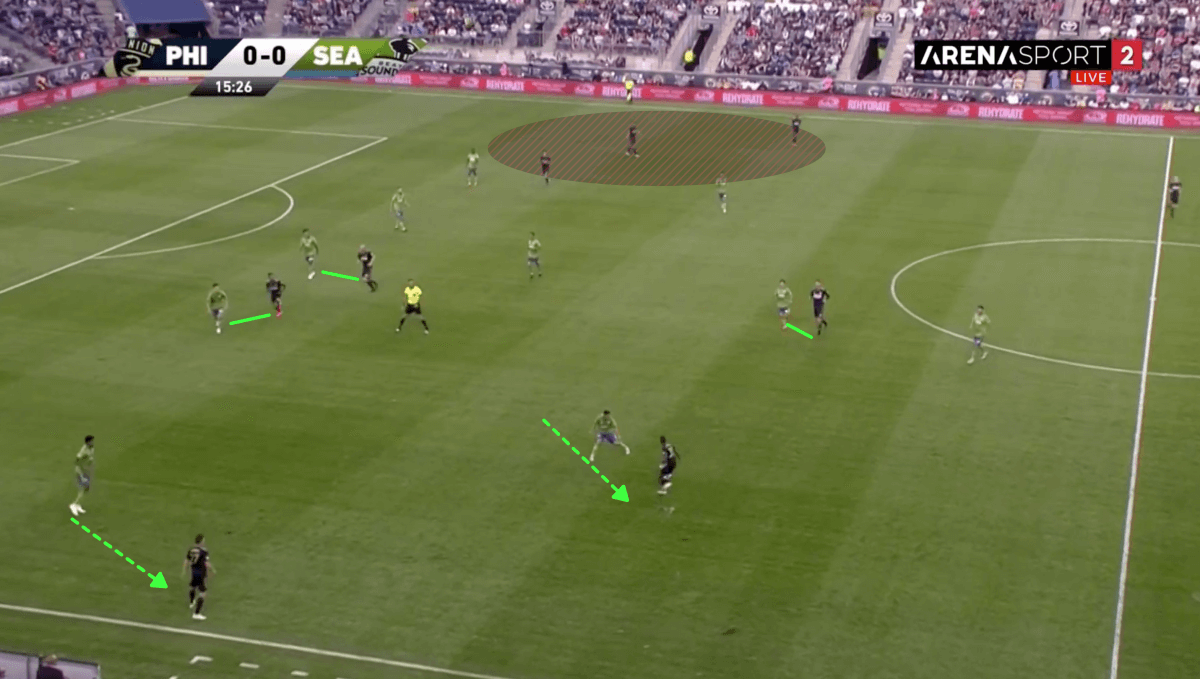
As a consequence of wrong positioning, the home side often failed to breakthrough even though there were opportunities to do so. The limited progression of the centre-backs and the deep positioning of Monteiro in this situation caused the lack of penetration power.
The centre-back passed to Monteiro who was then faced with instant pressure and becoming isolated again. If Trusty advanced more courageously it would have allowed the centre-midfielder to occupy higher and create a 2v1 situation against Roldan.
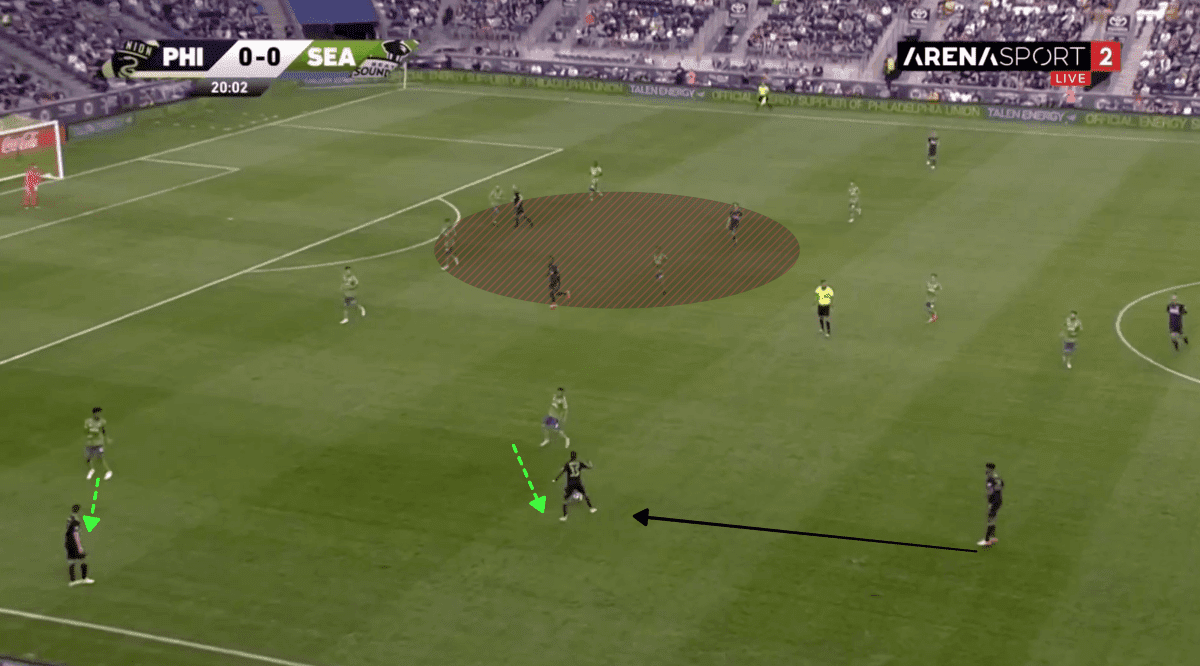
Conclusion
The combat of these two teams was highly interesting, mostly from a tactical point of view. Seattle Sounders did an impressive job defensively and their tactics were good as they neutralised the opponent’s strengths. This came at a price, however, since they were only able to produce an xG of 0.5.
The draw was probably good for both sides as they could keep their positions in the table.
If you love tactical analysis, then you’ll love the digital magazines from totalfootballanalysis.com – a guaranteed 100+ pages of pure tactical analysis covering topics from the Premier League, Serie A, La Liga, Bundesliga and many, many more. Buy your copy of the May issue for just ₤4.99 here, or even better sign up for a ₤50 annual membership (12 monthly issues plus the annual review) right here.

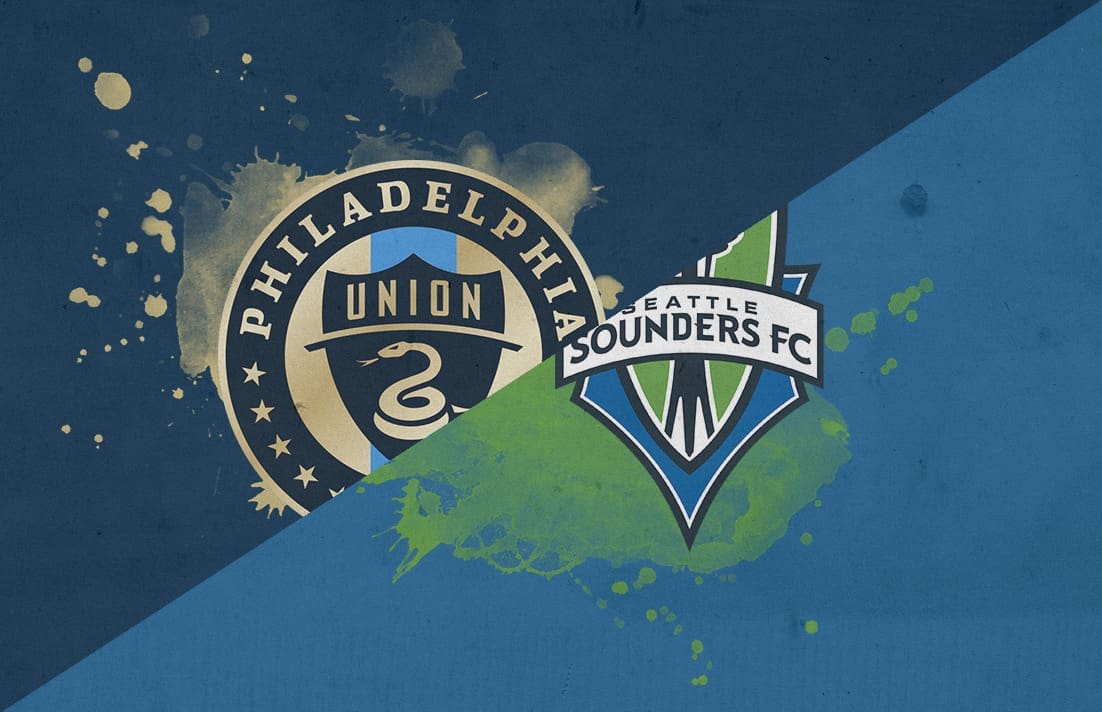


Comments